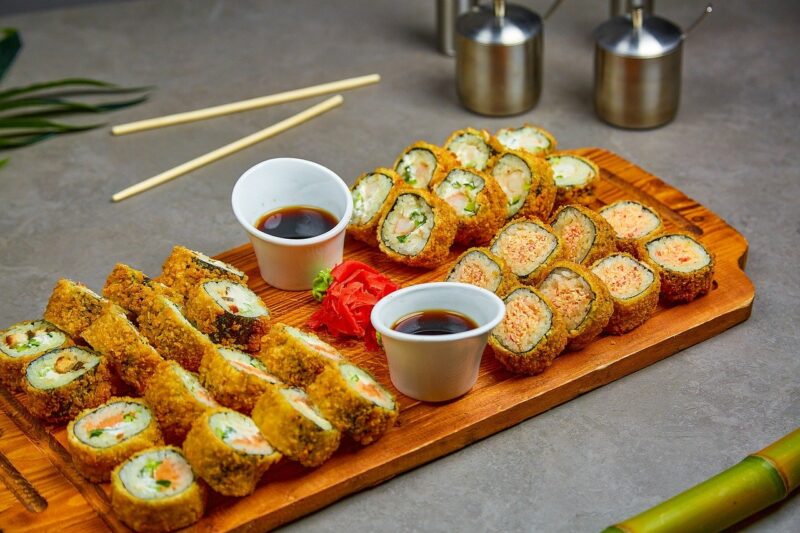How Fugu, the Deadly Pufferfish Dish, Became Japan’s Ultimate Thrill
November 13, 2024

Fugu, the infamous Japanese dish made from the pufferfish, is regarded as one of the most dangerous delicacies in the world. This encapsulation of danger and culinary art has led to its status as a culinary thrill that attracts adventurous eaters from around the globe. But what makes fugu so perilous yet so sought after? In this article, we’ll explore the history, preparation, legal regulations, and cultural significance surrounding Fugu, providing insight into why it is cherished and feared in equal measure.
A Culinary History: The Origins of Fugu
Fugu has a storied history that dates back to ancient Japan. Historical records indicate that fugu was consumed as early as the 8th century, though the widespread consumption didn’t occur until more recent centuries. Superstitions surrounding the fish, which was often associated with death due to its toxicity, led to it being considered a dish for the brave.
The Japanese term “fugu” is derived from the word “fuguh” which means pufferfish or blowfish, characterized by their ability to inflate when threatened. Today, Japan is the leading consumer of fugu, especially in regions like Hiroshima and Fukuoka, where it is celebrated as a seasonal delicacy.
The Toxins: What Makes Fugu Dangerous
What sets fugu apart from other seafood is its acute toxicity, which arises from a potent poison known as tetrodotoxin. Found in various parts of the fish, such as the liver, ovaries, and skin, this neurotoxin can cause paralysis and even death if ingested in sufficient quantities.
Despite this danger, the allure of fugu is heightened by the culinary challenge it presents. Chefs trained in the art of fugu preparation undergo rigorous training, often lasting up to three years, and must obtain a license to legally prepare and serve fugu in Japan. This specialized skill is a testament to the chef’s expertise and knowledge of the fish’s anatomy, allowing them to remove toxic parts while maximizing flavor.
The Fugu Experience: Dining with a Touch of Danger
Dining on fugu is not just a meal; it’s an experience. Restaurants that specialize in serving fugu offer a curated menu where every dish—whether sashimi, fried, or in a hot pot—is an homage to the fish’s unique qualities.
Fugu sashimi, often served in delicate, translucent slices, is typically accompanied by ponzu sauce and garnished with finely chopped leeks. This presentation highlights the chef’s meticulous technique and the freshness of the fish. Meanwhile, the hot pot dish, known as ‘fugu-chiri,’ involves simmering fugu in a fragrant broth, allowing diners to savor the fish’s flavors in a warm and communal setting.
However, it is the anticipation of the potential danger that makes the fugu experience notable. Diners often feel a mix of excitement and trepidation, knowing they’re partaking in a meal that dances along the line of thrill and risk.
The Legal Landscape: Regulation of Fugu in Japan
Due to the risks associated with its preparation, fugu is one of the most regulated foods in Japan. The government mandates strict training and licensing requirements for chefs. Every year, several medical incidents arise from mishandled fugu, leading to further regulatory scrutiny.
Additionally, fugu may only be sourced from approved fisheries known to adhere to strict handling guidelines. These regulations are intended to minimize the risk of poisoning while maintaining the integrity of this cultural delicacy. Licensing ensures that only those with proven expertise are allowed to prepare fugu, which reassures diners of their safety.
Cultural Significance: Fugu in Japanese Society
To Japanese culture, fugu embodies a paradox: it is both a prized delicacy and a harbinger of potential danger. Traditionally, fugu is associated with seasonal changes—enjoyed during the colder months, it represents warmth and harmony, often shared among friends and family during celebratory gatherings.
Fugu has also evolved into an icon within popular culture, featuring in television series, films, and literature, often depicted as the epitome of culinary bravery. This representation further fuels the fascination surrounding the dish, making it a hot topic in discussions about culture, adventure, and gastronomy.
In comparison to Western culinary pursuits, where risk is mostly associated with thrill-seeking, fugu stands as a unique testament to Japan’s appreciation for balance—between human ingenuity and nature’s danger.
Alternative Approaches: The Rise of Non-toxic Fugu
In recent years, with health concerns growing and public awareness increasing, alternative preparations of fugu have gained traction. There are non-toxic variants of pufferfish that can mimic the taste and texture of traditional fugu without the risk of poisoning. These dishes are created using legal substitutes, enabling more individuals to enjoy dishes inspired by fugu without the innate dangers.
Moreover, some restaurants now offer modern takes on fugu that emphasize the fish’s culinary qualities while removing the element of risk. This innovation illustrates the adaptability of Japanese cuisine while also appealing to the global palate, making fugu more accessible to those previously deterred by danger.
Conclusion: Fugu – A Taste of Risk and Reward
In conclusion, fugu remains an enigmatic dish that captivates the senses and charms the adventurous. Its history, the skill involved in preparation, and its cultural significance work together to create a multifaceted experience that is unique to Japan. To dine on fugu is to engage with a culinary tradition that celebrates risk and reward—a true adventure on a plate.
As you contemplate trying fugu, remember to seek licensed restaurants, engage with trained chefs, and appreciate the artistry that goes into preparing this deadly delicacy. After all, what better way to explore the thrill of Japanese cuisine than by partaking in a dish that testifies to the balance of life and culinary exuberance?








